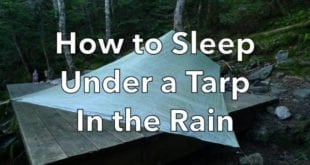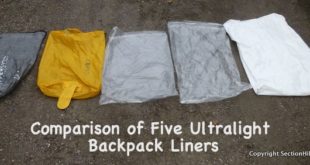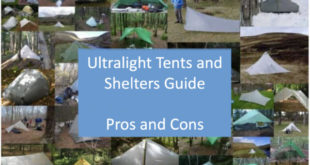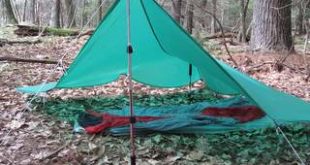Tarps are a great ultralight backpacking shelter option, provided they’re used in a climate where there’s no rain or occasional rain. To clarify, I’m talking about square or rectangular tarps with or without catenary cut ridgelines and sides, and not single wall …
Read More »Ultralight 101
Ultralight Backpacking Tent Footprints
Most tent footprints are unnecessarily heavy. But there are some easy ways to reduce the weight of your footprint using ultralight footprint alternatives. Backpackers and campers use tent footprints to protect the bottom of their tents from sharp rocks and sand that can …
Read More »The Joy of Esbit
Esbit Cubes are the simplest, lightest, and most reliable way to boil water or cook food on backpacking trips. There’s no extra container weight to carry with Esbit Cubes, like a white gas stove bottle or isobutane canister, and you can even …
Read More »Comparison of Five Ultralight Backpack Liners
Backpackers are split about 50/50 when it comes to using a backpack rain cover or lining the inside of their backpacks with a plastic bag or backpack liner designed for that purpose. When I started backpacking, I used a backpack rain cover …
Read More »How to Reduce the Weight of Your Consumables
The heaviest items in your backpack are water, food, and fuel. They’re called consumables because you use them up as your trip progresses, as opposed to “base weight” which measures the weight of non-consumable items like a backpack, tent, unworn clothing, a …
Read More »Ultralight Tents and Shelter Guide: Pros and Cons
Ultralight backpacking tents and shelters come in all shapes and sizes, but each type has pros and cons for different camping conditions. It’s best to understand these before you waste money on a tent or shelter that doesn’t suit your needs or …
Read More »Ultralight Cooking without a Stove
How would you like to eliminate the weight of your backpacking stove and the fuel container (canister, liquid fuel bottle, or alcohol bottle) that you use to carry your cooking fuel on backpacking trips while still being able to boil water and …
Read More »9 Essential Ultralight Backpacking Skills
Ultralight backpacking requires an extreme form of self-reliance where backpackers compensate for bringing less gear by having more advanced backcountry skills. While many other backpackers and day hikers have these same skills, “going ultralight,” or the less extreme “lightweight” is more committing, since ultralight backpackers carry less …
Read More »Big Three Ultralight Backpacking Makeovers
When it comes to gear list weight reduction for lightweight and ultralight backpacking, the biggest gains come from lightening the big three, including your backpack, tent, and your sleep system which includes a sleeping pad and sleeping bag or quilt. These are …
Read More »My Gear List Philosophy
When I started getting into lightweight backpacking, I spent a lot of time staring at my gear list to make sure I squeezed every ounce of weight out of it. That’s ok. It’s part of the process that every lightweight or ultralight …
Read More »Twelve Ultralight Backpacking Tents and Shelters: Part 1
I’ve bought and owned 12 ultralight shelters in the past 6 years. Several of you asked what they were, and wanted to know why I bought them and then moved on to others (See also How to Choose an Ultralight Tent or …
Read More »Lightweight Backpacking: The Big Three
The three heaviest items in your backpacking are your backpack, your sleep system (sleeping bag+pad), and shelter, often called the Big 3. Your sleeping bag and pad are treated as one item because you really can’t use them separately for sleeping. If you …
Read More »What is an Ultralight Backpack?
Ultralight backpacks tend to be a lot lighter than more mainstream backpacks with internal or external frames and generally fall under 2 pounds in weight. There are exceptions to this and some UL packs are heavier than two pounds, but it’s a …
Read More »Lightweight Backpacking with Multi-function Gear
This article’s focus is on helping you further reduce your pack weight by selecting backpacking gear that can be used for multiple functions. If you can bring less gear, it will weigh less, and you can further cut down on pack weight …
Read More » SectionHiker.com Backpacking Gear Reviews and FAQs
SectionHiker.com Backpacking Gear Reviews and FAQs 












